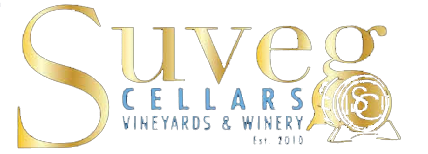New Release: 2015 Roussanne (Lodi)
A native of the Rhone Valley in Southeast France, this grape takes its name from the French roux, or russet because the grape responds to sunlight during periods of peak ripening (verasion) just prior to harvest causing the fruit exposed to the sun to acquire a reddish-brown color. Praised by Pliny the Elder as early as 71 A.D., he observed the wine’s resin like qualities most likely due to the resin coating given cargo vessels which transported wine over long distances. Roussanne produces a full-bodied, aromatic and complex wine with considerable palate weight and aging potential with hints of herbs, lime blossoms, quince, peaches, Bosc pear, melon and honey. Traditionally, it is often blended with other Rhone varietals especially Viognier and Marsanne but is appreciated for its superior elegance and finesse in comparison to its sister Marsanne.
The 2015 bottling represents our second vintage of Roussanne. The first, in 2011 (Temecula Valley), earned a Silver Medal at the Orange County Wine Society Winemaker’s Competition in 2013. For the 2016 vintage, we decided to source our fruit from Lodi and blend it with 7% Viognier prior to aging it 13 months in new medium toast Seguin Moreau French oak barrels. By comparison, I aged our 2011 (100% Roussanne) in new French oak for 9 months. Stylistically, I like to blend prior to barreling down as opposed to prior to bottling because I feel the wine becomes more integrated and uniform. As a varietal, Roussanne holds its acidity well and is capable of being crafted into a rich style without being necessarily heavy if the winemaker so chooses.
For me, Roussanne is a fascinating grape to work with simply because it presents so many different challenges. Most notably, the fruit profile is chameleon like, falling into a pear and peach spectrum although tropical fruit such as mango and pineapple make appearances as do quince, apple, pomelo and even a creamsicle orange. Other flavors constantly compete as well but what is interesting is that the predominant flavor seems to change: one moment you’re getting stone fruit the next moment fleeting sensations of tropical fruit.
Roussanne has always been a personal white wine favorite of mine and in my experience, it often goes into a kind of embryonic state after bottling. It is not immediately expressive as a young wine but then the honey notes begin to show up followed by the floral notes and it begins to gain depth. It physically seems to gain weight. Only then do you become validated that you didn’t screw it up! I prefer to wait a minimum of three months after bottling before release.
Winemaker’s Notes: pH 3.45, Abv *, Cases Produced 63
Available April 2018.
